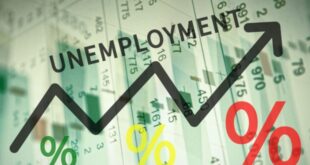That’s the conclusion of a recent report that found a major surge in business activity in the region at the end of last year. At least for now, the two-county region is outperforming the state in that economic category.
Two weeks after reporting that the Inland Empire has recovered all of the jobs it lost during the pandemic, and added a few, the UC Riverside School of Business Center for Economic Forecasting and Development has found more good news in the local economy.
Business activity in the Inland region increased 6.4 percent between the third and fourth quarter of 2021, another sign the local economy is expanding.
To put those numbers in perspective, the U.S. gross domestic product grew seven percent during that time, but it still lagged behind the Inland region for total growth: 5.6 percent versus 6.1 percent.
“The Inland Empire officially transitioned from recovery into expansion to close out 2021,” according to the forecasting center’s latest quarterly analysis of Inland business activity. “Growth has been impressive across a variety of indicators that are now trending above where they stood prior to the pandemic.”
That growth rate – between three and 3.5 percent – should continue through the remainder of 2022 but at a slower pace, said Taner Osman, research manager at the forecasting center and a co-author of the report.
“Now that the region is again in expansion mode, as opposed to recovering losses from the pandemic-driven recession, growth will moderate,” Osman said in a statement announcing the report’s release.
Like every other California submarket, the Inland region’s biggest concern remains not enough workers. That trend is being caused by several factors, primarily the high cost of living in California compared with other parts of the country, the report states.
By now, everyone knows that the growth in e-commerce played a major role in getting the Inland region through the economic downturn caused by COVID-19, that growth – people shopping from home for safety reasons – increased activity at warehouse-distribution centers, something the Inland Empire was in a perfect position from which to benefit.
But another factor – intervention by the federal government – also helped the local economy outperform much of the state during pandemic, according to Osman.
“Online shopping was already popular, and the pandemic caused it to grow even more, and that did help,” Osman said during a telephone interview. “But the federal stimulus had a lot to do with it, too. That kept a lot of businesses from going under.”
“Business activity” refers to any act performed by a business that helps it make a profit and continue operating. That includes production, sales, buying property, plant space or equipment, buying other companies, buying marketable securities or taking out loans from financial institutions.
The forecasting center’s report, which is seasonally adjusted, takes into account a number of factors, including employment, economic output, income and real estate, as well as some national and state indicators.
It also uses taxable receipts, a category where the Inland economy excelled in 2021.
Inland Empire’s tax receipts performed better than any category since the start of the pandemic, rising nearly 37 percent since the first quarter of 2020, compared to the state’s growth rate of 20 percent.
Taxable receipts were helped by an increase in the business-industry category, which includes fulfillment centers. Those are warehouses that ship goods directly to consumers, often the same day the order is placed.
Historically, business-industry has accounted for about 15 percent averaged all taxable sales in the Inland Empire, but last year they made up about 20 percent, according to the forecasting center.
“Tax receipts are a reliable indicator [of business activity] because you can go back and compare them to past years,” said Jay Prag, professor of economics at the Drucker School of Management at Claremont Graduate University. “They make it easier to make a case whether business activity is up or down.”
Housing has also been a bright spot, with home sales up 16 percent from where they were prior to the pandemic. That increase was due to several factors, including rising incomes, changes in consumer preferences and a decline in mortgages rates.
Residential building permits have increased 7.2 percent percent since the first quarter of 2020, about two percentage points lower than the state during that time. Non-residential permits have remained “relatively flat,” the forecasting center reported.
The Inland economy is definitely expansing, but it’s not the same economy that it was before they pandemic, Prag said.
“There’s been a lot of rearranging because of COVID,” Prag said. “We lost a lot of jobs in restaurants and retail, but we gained a lot of jobs in healthcare. We also have people who get paid to shop for you. It was all caused by health crisis, but we got through it. That we’re already back to economic expansion is miraculous.”
 IE Business Daily Business news for the Inland Empire.
IE Business Daily Business news for the Inland Empire.


